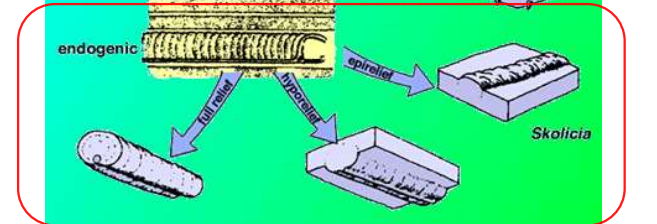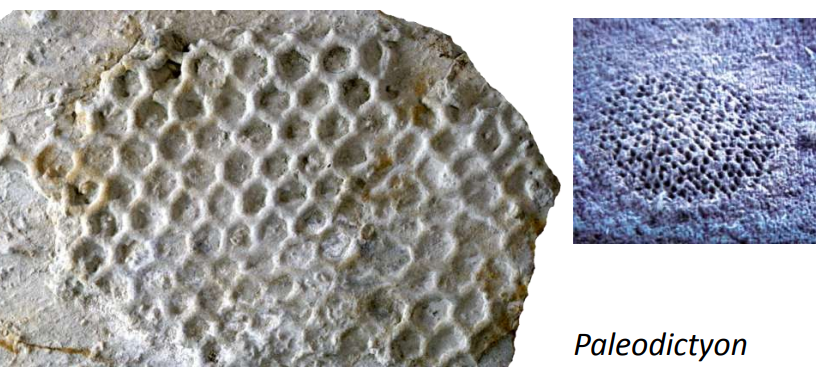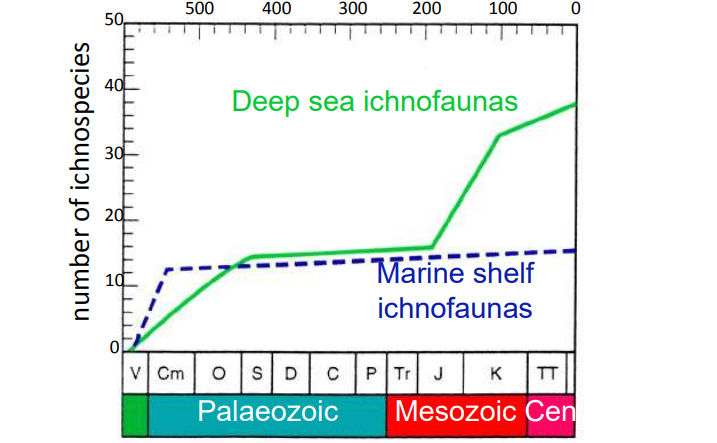Trace fossils
1/27
Earn XP
Description and Tags
Define the term 'trace fossils' and briefly outline their use in palaeoenvironmental analyses.
Name | Mastery | Learn | Test | Matching | Spaced |
|---|
No study sessions yet.
28 Terms
Trace fossils are also referred to as…
ichnofossils
What are trace fossils?
a fossil record of the activity of an organism rather than they’re remains
what are trace fossils evidence of?
Activity of an organism
Preservation shows/ depends on
how the trace fossils and how the organism interacts with the sediment
Endogenic traces
made within; organism burrowing into the sediment

Exogenic traces
not in full relief/ epirelief; made on the surface

Traces can be:
full relief: burrow preserved in 3 dimension; only endogenic
epirelief: on top of bed
hyporelief: on base of bed; most common; common in interbedded sand and muds
Resting trace
common
series of scratches
organism leaves a hollow - filled with sediment
left by multiple organism e.g. snails, trilobites
Repichnia
walking/crawling trace
bilobed structure - series of scratch marks/ drag marks
Cubichnia
restring trace
cubare = to lie down
Domichnion
living burrow
Diplocraterion
escape trace
Paschinia
surface feeding trace
series of infinite loops
try not to come back on themselves
cover as much area as possible

Fodinichnia
mining feeding trace
worm punching into sediment
animals living close to sediment water-face
try to avoid previoisly ingested sediment
Agrichnia
cultivation trace
characteristic of deep waters
organism creates a series of chambers to harvest algae from

Utility of trace fossils
helps identify pre-Cambrian - Cambrian boundary: base of Cambrian defined by appearance of Phycodes
diversity throughout the phanerozoic
helps us understand behaviour of ancient organisms

Trace fossils can be used as…
environmental indicators
how can trace fossil be used as environmental indicators
communities of trace fossils can determine the environment
What do Thalassonoides indicate?
Typical of littoral deposits; beachfront deposits; shallow water deposits
4 classic marine ichnofacies
Nereites
Zoophycos
Cruziana
Skolithos
what does the skolithos ichnofacies indicate
indicates highly mobile seafloor/ substrate floor
what do the Psilonichnus and Scoyenia describe?
marginal marine and freshwater occurrences or communities of trace fossils
glossifungites ichnofacies
substrate dependant forms: shallow water
Trypanites ichnofacies
substrate dependant; boring into limestone;
Teredolites ichnofacies
substrate dependant; boring into wood
marine ichnofacies are related to…
Sediment type
Water depth
rate of deposition
what are the controls on distribution of trace fossils?
Avg. grain size of the sediment
Affects sediment ingesting burrowers
Organisms that requires particular sediment
Filter feeder avoid fine sediment particles
Sediemt stability
Glossifungites and Trypanites ichnofacies depend upon firm and lithified substrates
Water content
Affect the consistency of the sediment
Chemical conditions
O2 levels - absent in anoxic conditions
what is tierring
the number of levels exploited by organisms; organisms producing trace fossils